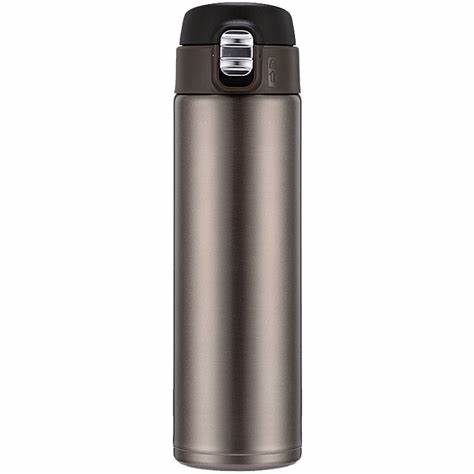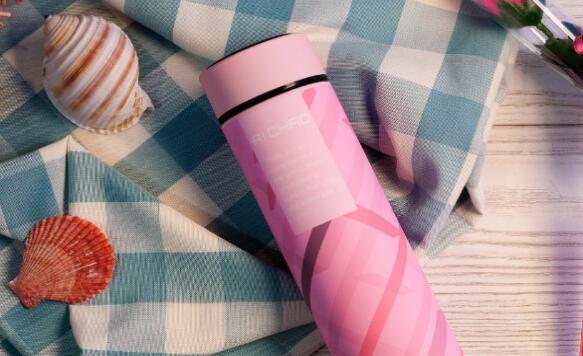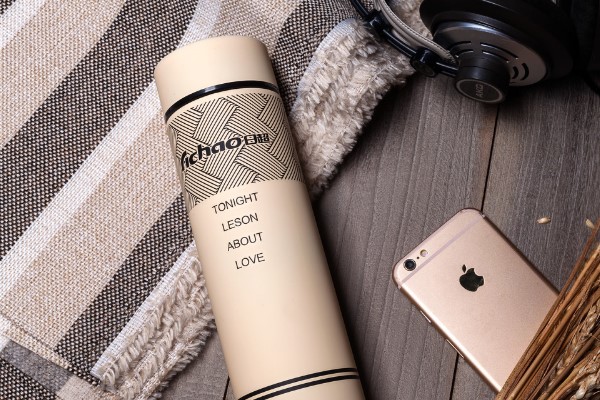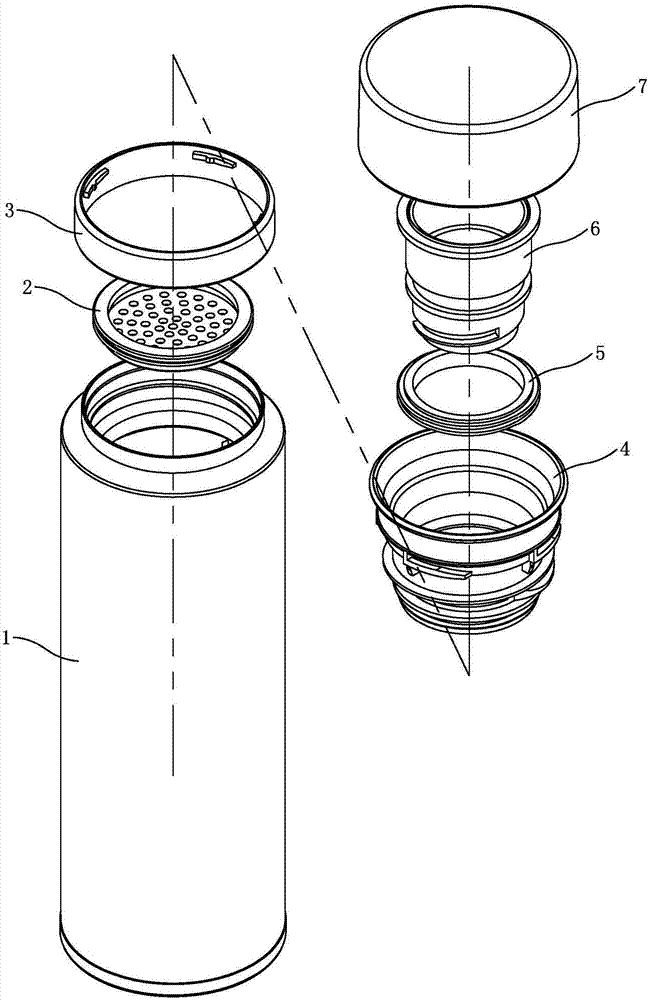What is a stainless steel vacuum flask?

Drinking water is indispensable for people. In the hot summer, come with a glass of cool ice water to quench your thirst; in the cold winter, a cup of hot coffee can refresh your mind. With the development of the economy, people's ideological awareness has improved, and "environmental protection" has become a hot topic. The ordinary paper cup is obviously not the best choice, because it can only solve temporary problems and provide us with convenience. They neither It is environmentally friendly and cannot maintain the temperature and lacks longevity. Therefore, the stainless steel vacuum flask has become the best choice for people. Below, JM Steel will show you how to explore the mystery of stainless steel vacuum flasks.
Advantage
Temperature: Stainless steel can maintain the required temperature of the liquid for several hours. For example, our 30-ounce stainless steel water cup can keep beverages cold for 24 hours and hot for 6 hours. Steel will not "sweat" or condense on the outside, so there is no need for coasters or insulation.
Antibacterial and sanitary: It is a well-known characteristic of stainless steel. It is widely used in the food and beverage industry. Stainless steel cups and bottles do not leak water. They do not need inner coatings or linings that will eventually decompose.
Understanding
When we buy thermos cups and stainless steel cutlery, we will see numbers marked with 304, 316, etc. These numbers actually represent the material of the water cup. What do the 304 and 316 on the cup mean?
This is the material model of the inner tank of the water cup. It refers to 304 and 316 stainless steel, and the full name is austenitic stainless steel. 304 and 316 stainless steel are internationally approved food-grade stainless steels, which are often used in stainless steel tableware. 304 and 316 stainless steel are stainless steel brands produced according to ASTM standards in the United States. 304, 316 stainless steel has good corrosion resistance and heat resistance, and is widely used in daily necessities such as tableware and water cups.
In order to maintain the inherent corrosion resistance of stainless steel, the steel must contain more than 18% chromium and more than 8% nickel. Therefore, most cups are marked with 304 and 316.
Analysis
We widely use 304 and 316 stainless steel to produce stainless steel vacuum flasks.
304vs316 stainless steel
1. Corrosion resistance and heat resistance.
The average nickel content of 304 stainless steel is 9%, while the average nickel content of 316 stainless steel is 12%. Nickel in metal materials can improve the high-temperature durability, mechanical properties and oxidation resistance of the material. Therefore, the content of the material directly affects the overall performance of the material. 316 stainless steel has higher corrosion resistance and heat resistance due to the addition of molybdenum. Generally, the high temperature resistance can reach 1200~1300 degrees.
Even under very harsh conditions, it can be used freely. The high temperature resistance of 304 stainless steel is only 800 degrees, and the safety performance is good.
The 316 stainless steel thermos is obviously better.

2. Scope of application.
316 stainless steel is used in food industry, medical equipment, etc. Stainless steel vacuum flasks are mostly made of 304/316 stainless steel. 304 stainless steel is mostly used in catering, home, medical equipment and other fields. They can be seen in the kettle, vacuum flask, tea strainer, tableware, etc. in the stainless steel vacuum flask. 316 stainless steel is the second most widely used steel after 304. It is mainly used in the food industry, watch jewelry, pharmaceutical industry and surgical equipment. The stainless steel has strong corrosion resistance, low thermal conductivity, and interlayer vacuum treatment. After the heat preservation effect is very good.
In contrast, choosing a vacuum flask made of 316 stainless steel is undoubtedly the icing on the cake.
3. Cost-effective.
Both 304 and 316 are austenitic stainless steels with a content of about 16-18%. The difference is that the molybdenum content of 316 stainless steel is 2% higher. There is basically no phenomenon of thermal expansion and contraction of 316 stainless steel. In addition, the corrosion resistance and high temperature resistance are better than 304 stainless steel. It has a certain degree of safety. If allowed, it is better to choose 316 stainless steel vacuum flask.

Therefore, the corrosion resistance of 316 stainless steel is better than that of 304 stainless steel, especially the chlorine corrosion resistance.
In addition, 304 stainless steel is a versatile stainless steel material. High temperature resistance is good, and the general use temperature limit is less than 650℃. 304 stainless steel has excellent corrosion resistance and good resistance to intergranular corrosion. 316 stainless steel, 18Cr-12Ni-2.5Mo. Because of the addition of Mo, its corrosion resistance, atmospheric corrosion resistance and high temperature strength are particularly good. It can be used under harsh conditions; it has excellent work hardening (non-magnetic). Both 304 and 316 are austenitic stainless steels. The difference is that 316 has 2% more molybdenum so that the corrosion resistance of 316 is better, especially the corrosion resistance of chlorine ion is better than 304. However, the price is about 20% more expensive.
304 and 316 stainless steel are actually suitable for drinking, but considering the cost, 304 stainless steel is already a very useful stainless steel with a density of 7.93g/cm3, also known as 18/8 stainless steel. Its metal products have the characteristics of high temperature resistance and good processing performance, and are widely used in industry, food, medical and other industries.
If you are in a special harsh environment and high requirements, please use 316 stainless steel.
Principle
The stainless steel vacuum flask is made of double-layer stainless steel inside and outside.

The inner tank and the outer shell are combined by welding technology, and then the air in the interlayer between the inner tank and the outer shell is drawn out by vacuum technology to achieve the effect of vacuum insulation.
304 and 316 stainless steel are the most widely used chromium-nickel stainless steels. The most important elements are nickel and chromium, but not limited to these two elements. It is a widely used steel with good corrosion resistance, heat resistance, and low temperature. Strength and mechanical properties, stamping, bending and other hot workability, no heat treatment hardening phenomenon (use temperature -196℃-800℃). The stainless steel material has strong corrosion resistance and low thermal conductivity. After the interlayer is vacuumed, the heat preservation effect is very good. It is resistant to atmospheric corrosion. If it is an industrial atmosphere or a heavily polluted area, it needs to be cleaned in time to avoid corrosion.
JM Steel focuses on providing excellent stainless steel products. We sell the 304 and 316 stainless steels mentioned above. We have managers from all over the world with many years of purchasing experience to provide you with personalized steel customized solutions. If you don't know anything about the above information, we welcome your consultation.